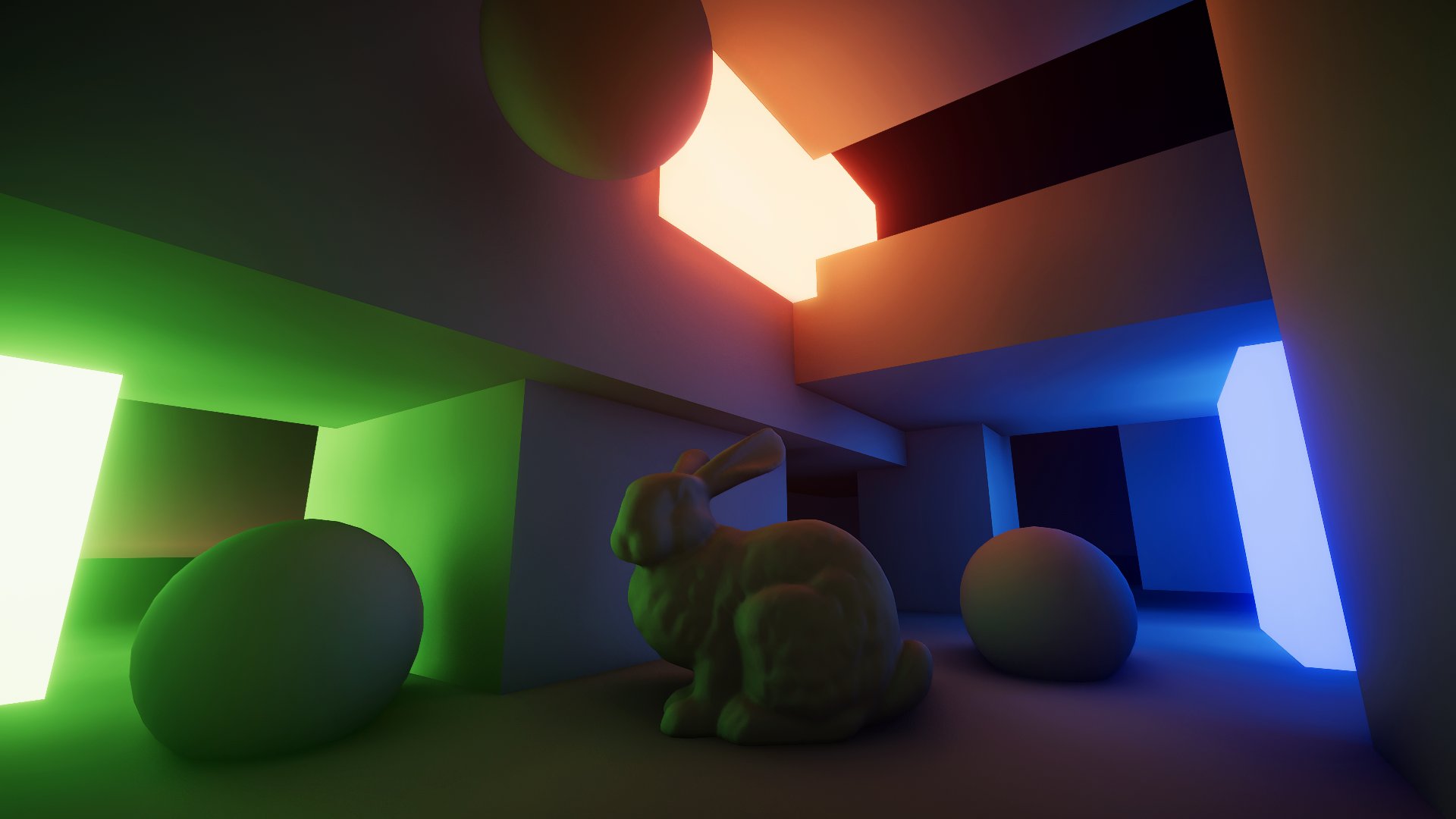This looks cool.
dlss in unity?
dlss in unity?
I was wondering when such little puzzle game will make use of RT since it's exactly the genre where one can go nuts with it due to scene simplicity and lack of need to run at more than 10 fps really.Is it ok to say Lego Builders Journey uses raytracing better than Doom Eternal?
Cause Lego Builders Journey uses raytracing better than Doom Eternal.
I was wondering when such little puzzle game will make use of RT since it's exactly the genre where one can go nuts with it due to scene simplicity and lack of need to run at more than 10 fps really.


Let's say we want a uniform resolution of one probe all 10 cm.The results for spatial probes vs surface caching from that Unity project show why I find spatial probes and cone tracing interesting. Lumen takes up a ton of performance and the emissive contribution is spotty at best (lol lol lol) while working with spatial probes and trading off smaller scale detail for less noise gives you the below for less runtime cost. Or you could go for cone tracing and get surface cache/final gather and get detail without the noise (though probably with the runtime cost).
We can turn this into an advantage: How can we benefit from probes in empty space? Instead tracing visibility, we can use a light diffusion approach. So we can eliminate the visibility term from rendering eq. which is most expensive. Makes sense.With spatial probes (uniform volume grid) very most of probes end up in empty or solid space, not contributing to any surface.
We can turn this into an advantage: How can we benefit from probes in empty space? Instead tracing visibility, we can use a light diffusion approach. So we can eliminate the visibility term from rendering eq. which is most expensive. Makes sense.
What we get is Cryteks LPV or Lexie Dostals YT videos, extending it from partial SS voxels to world space volume.
Problems: Hard to represent accurate angular signal - SH2 washes out colors from opposite direction, many coefficients quickly become too expensive, and speed of light depends on our diffusion iterations, so becomes very slow.
Still i think that's attractive for volumetric lighting in combination with surface probes approach.
I have tried such things a bit using SH2/3 and ambient cube. Ambient cube has the advantage each direction is independent, so can model multiple colors going in all directions better. Downside is directions are quantized.Anyway, the coolest thing you could do with a lightprobe grid is include participating media. Include fog visibility... somehow. But once you have that you can start recursively bouncing around light. You get correct multiscattering from and to heavy fog, potentially from all light sources! All the effects are there, indirect shadowing and lighting of fog all shows up.
Avatar: Frontiers of Pandora will have RT reflections and RT GI according to this:
Avatar: Frontiers of Pandora will have RT reflections and RT GI according to this:
And RT shadows confirmation in IGN article about teh game.
https://www.ign.com/articles/avatar-ubisoft-massive-open-world-details
We have a completely new lighting system that is based on ray tracing, and I think it is a dramatic step up in quality that makes you feel like it's a real place. One tiny example is that it can actually handle the translucency of the leaves [...] so it can figure out how much of the light is reflected through the leaves, how tinted it is with the colors and everything else. You get lovely reflections and sights for the water, even down to the volumetric clouds up in the sky – they actually receive the correct lighting as well."
Martial Bossard, an executive producer on Microsoft Flight Simulator at Asobo, confirmed the upcoming move to DirectX 12 on PC will also allow the team to enable ray tracing in the game. Effects should include better water, improved shadows, and the usual reflections we expect to see in ray-traced games.
